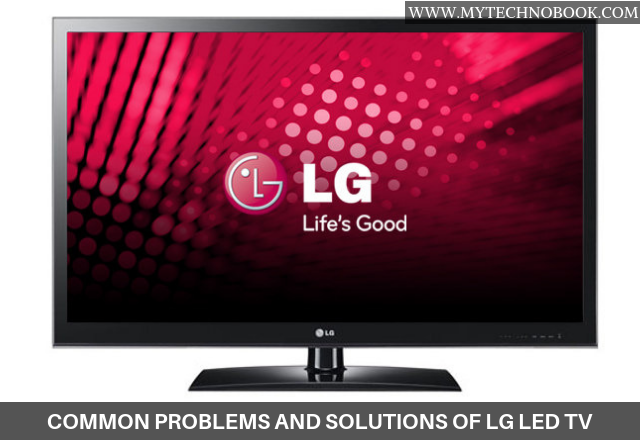Introduction
Choosing the correct picture mode is very important to get the right picture for each input type. The surrounding conditions, personal preference and type of use may require different picture settings. This article gives a brief overview of the type of picture settings for a Samsung LED TV and ways to calibrate it to get the best picture quality for daily viewing.
Different types of picture settings in Samsung LG television
Following types of picture modes, also called presets are available in a LED television.
Vivid or Dynamic: This type of setting is adequate for places that have got plenty of light. This mode increases brightness, sharpness and contrast to generate a clear picture. This setting enhances the image so much that makes it “pops” more. This mode enhances the existing color palette and improves the brightness. The downside to this model is that it can reduce the picture details. Also, looking at a too bright screen can hurt your eyes.
Standard: This mode isn’t precise as “Movie mode” and not lively as “Dynamic”. It provides moderate level of brightness for nighttime and daytime viewing. Standard mode performs decently for any kind of television program.
Movie: This is the most precise setting, that is mostly used to play movies on a DVD player or Blu-Ray or DVD. This mode creates a perfect image quality for movies and is beneficial in the evening time. It provides low-light viewing, and gives the nearest image intended by the director.
Sports Mode: This mode improves motion handling to produce images for watching sports.
Game: This mode deactivates a lot of picture processing to produce the lowest level of input lag.
HDR-Effect: This mode enlarges the dark and light regions of an image, by mimicking proper HDR. In this way it produces a dynamic image.
APS / Eco: It is an energy saving mode. It changes all the television settings to lower energy consumption.
Backlight
The backlight controls the level of light that a television puts out. Rooms that have a lot of light need a high level of setting than the ones located in a dim location.
Brightness
Brightness deals with the black levels in a picture. The right method to adjust the levels of brightness is to begin with a widescreen movie. Tweak its brightness level a little till you find the bars on the bottom and top to be seamlessly black.
Contrast
Contrast of a picture can be calibrated by adjusting its white levels. It should be done in the way that white objects should pop along with maintaining a satisfactory level of detail.
Sharpness
Sharpness gives more clarity to an image by adding edges to the objects. High-definition images have excellent sharpness. If you see the grids with pointed edges or straight lines, then it indicates adjustment of sharpness settings.
Tint
Tint doesn’t need any adjustment in most of the cases.
Color
Most of the high-end televisions display outstanding color accuracy. You need to only calibrate this setting in low quality televisions. A professional calibration disc will help in adjusting the saturation of colors in your TV.
Samsung Expert Settings
Backlight: It modifies the maximum brightness of the backlight of the television.
Brightness: It alters the manner in which very dark content is shown on the screen.
Local Dimming: It dims specific areas backlight of the LED TV screen to match the lighting of the shown scene. You can set this feature to low level, standard level or high level but it can’t be switched off completely.
Contrast: It improves the contrast ratio by reducing the image details.
Tint (G/R): This setting removes a red or green tint from the picture.
Digital Clean View: It is a Noise Reduction Feature by Samsung.
Auto Motion Plus: This mode aims at enhancing the motion handling of a television.
Blur Reduction: Use this feature to reduce distortion in your image.
LED Clear Motion: This feature gives clarity to a motion at the expense of the brightness levels. You may also notice flicker on the screen.
Color Tone: This feature calibrates the “color temperature” of the LED TV screen. You can choose between options “warm1” and “warm2”.
White Balance: This setting eliminates tints from white.
Gamma: By changing the gamma curve, you can enhance various brightness levels of your television.
The best recommended Samsung LED TV Settings
Picture Mode Movie
Backlight It depends on the room’s brightness
Local Dimming Low
Brightness 0
Sharpness 0
Contrast 45
Tint (G/R) G50 / R50
Color 25
Auto Motion Plus Off
Digital Clean View Off
Contrast Enhancer Off
Gamma 2.2
Color tone Warm2
RGB-Mode Aus
Eco Settings Off
Color Space Settings Auto
HDMI Black Level Off
MPEG Noise Reduction Off
Picture Size 16:9 Standard
HDMI UHD Color On for HDR-sources
Fit to screen Off
Conclusion
As the picture settings in different units of the same model can differ, it is hard to determine a specific set of picture setting for a Samsung LED television. The above picture setting will surely improve the overall picture quality of almost all Samsung LED TVs.

